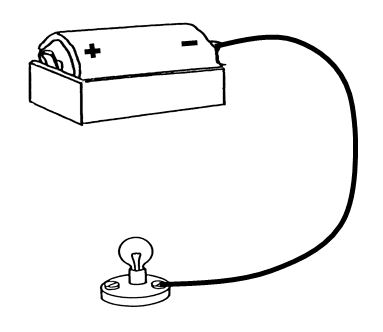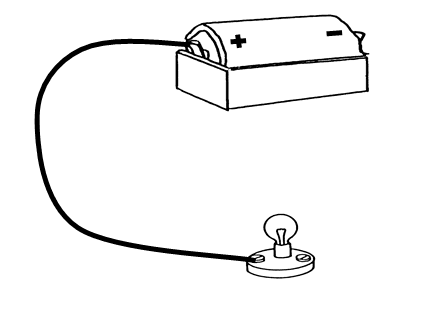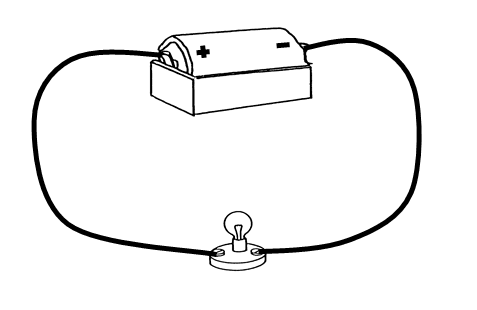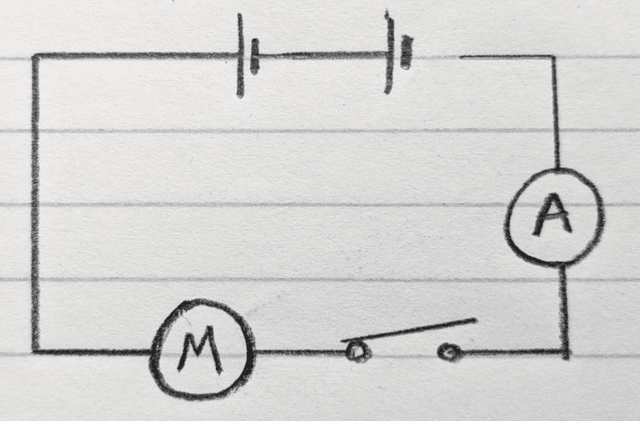Myths about teaching can hold you back
- Year 8
Electric current
I can describe how a cell causes current in a circuit and explain the movement of electrons.
- Year 8
Electric current
I can describe how a cell causes current in a circuit and explain the movement of electrons.
These resources will be removed by end of Summer Term 2025.
Switch to our new teaching resources now - designed by teachers and leading subject experts, and tested in classrooms.
These resources were created for remote use during the pandemic and are not designed for classroom teaching.
Lesson details
Key learning points
- One end of a battery has a positive charge and one end has a negative charge, because of chemical reactions inside it.
- A battery pushes electric charge (electrons) one way round a complete circuit.
- There are electric charges in all atoms of the wires and components in a circuit, even when it is not turned on.
- When a circuit is turned on, electrons everywhere in the circuit start moving at the same time.
- Individual electrons move round a circuit slowly, at a speed of just a few millimetres each second.
Keywords
Electrical cell - An electrical cell is a component that uses a chemical reaction to make electric charge flow in a circuit.
Charge - Objects can have an electrical charge that is positive or negative. If there is no charge, they are neutral.
Electrons - Electrons are the charges in conductors that flow to cause an electric current.
Electric current - Electric current is the flow of electric charge in a circuit.
Common misconception
Many pupils imagine electric current to emerge from a battery or a power supply and to move around a circuit in a sequential way. This leads to a consumption model of electricity.
Give pupils opportunities to test different incorrect models (e.g. the unipolar and clashing current model,s as well as the consumption model).
To help you plan your year 8 science lesson on: Electric current, download all teaching resources for free and adapt to suit your pupils' needs...
To help you plan your year 8 science lesson on: Electric current, download all teaching resources for free and adapt to suit your pupils' needs.
The starter quiz will activate and check your pupils' prior knowledge, with versions available both with and without answers in PDF format.
We use learning cycles to break down learning into key concepts or ideas linked to the learning outcome. Each learning cycle features explanations with checks for understanding and practice tasks with feedback. All of this is found in our slide decks, ready for you to download and edit. The practice tasks are also available as printable worksheets and some lessons have additional materials with extra material you might need for teaching the lesson.
The assessment exit quiz will test your pupils' understanding of the key learning points.
Our video is a tool for planning, showing how other teachers might teach the lesson, offering helpful tips, modelled explanations and inspiration for your own delivery in the classroom. Plus, you can set it as homework or revision for pupils and keep their learning on track by sharing an online pupil version of this lesson.
Explore more key stage 3 science lessons from the Series circuits unit, dive into the full secondary science curriculum, or learn more about lesson planning.

Equipment
Licence
Prior knowledge starter quiz
6 Questions
Q1.In which circuit will the bulb light?




Q2.A motor is connected to a cell and spins. Which of the following would cause the motor to spin faster?
Q3.What mistake has been made in this circuit diagram?

Q4.Which component is represented by the circuit symbol shown?



